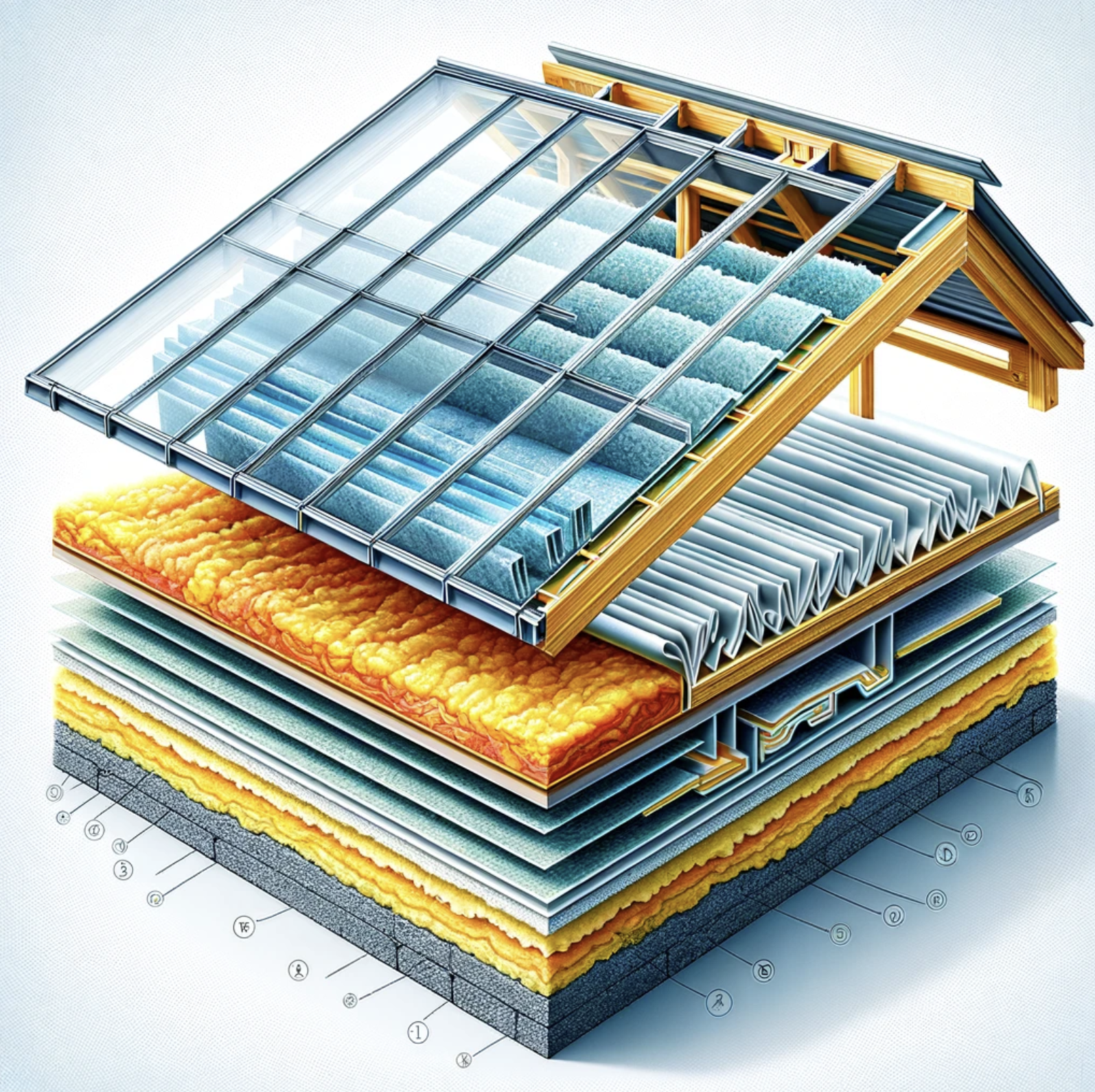Polycarbonate roofing is a top choice in construction projects due to its durability and versatility. However, proper insulation is vital to maximising its effectiveness. In this guide, we'll walk you through insulating a polycarbonate roof to enhance its thermal efficiency, energy savings, and overall comfort for your space.
What Is Polycarbonate?
Polycarbonate is a lightweight, highly durable plastic commonly used in sheet form for its strength and adaptability. If you need a material that is weatherproof and impact-resistant, polycarbonate sheets are an ideal choice. They work exceptionally well for greenhouse panels, protective barriers, and roofing.
Compared to glass, polycarbonate sheets are not only easier to handle due to their lighter weight, but they're also much more resilient. Many options come with UV protection, which helps prevent yellowing and brittleness, extending their lifespan even in outdoor applications.
They come in various forms, including clear 4mm twin-wall polycarbonate sheets and bronze polycarbonate sheets, each suited for different applications.
While inherently insulating, additional insulation can further enhance polycarbonate's performance.
The Importance of Insulating Polycarbonate Roofs
Insulating a polycarbonate roof offers several advantages:
- Improved thermal efficiency: Insulation helps maintain a consistent temperature, reducing heating and cooling costs.
- Enhanced comfort: A well-insulated roof minimises heat transfer, keeping the interior comfortable regardless of external weather conditions.
- Noise reduction: Insulation can dampen external noise, such as rain or hail.
How to Insulate a Polycarbonate Roof
Step 1: Gather Your Materials and Tools
- Insulation material (e.g., foam board, reflective insulation)
- Sealant and caulking gun
- Tape measure and marker
- Utility knife or saw.
- Safety gear (gloves, goggles)
Step 2: Choose the Right Insulation Material
Select an insulation material suited for polycarbonate roofing. Foam boards and reflective insulation are popular choices.
Step 3: Measure and Cut the Insulation
Measure the area of your polycarbonate roof. Cut the insulation material to size using a utility knife or saw. For guidance on cutting, refer to our blog on how to cut polycarbonate sheets.
Step 4: Apply Sealant
Apply a sealant layer along the areas where the insulation will be placed. This helps create an airtight seal, enhancing the insulation's effectiveness.
Step 5: Install the Insulation
Carefully place the cut insulation material onto the polycarbonate sheets. Ensure it fits snugly against the roofing material without gaps.
Step 6: Seal the Edges
Caulking should be used along the edges of the insulation to prevent air leaks. Ensure all joints and seams are well-sealed.
Step 7: Install Glazing Bars
Consider installing glazing bars to add support and enhance the roof's aesthetic. They provide structural support and can improve the overall look of the roof.
Tips for Effective Insulation
To ensure the smoothest insulation possible, follow these tips:
- Ensure proper ventilation: Ensure your roof has adequate ventilation to prevent condensation buildup.
- Choose UV-resistant materials: If using foam boards, opt for UV-resistant options to prevent degradation over time.
- Consider the roof's slope: For optimal performance, adjust your insulation technique based on the slope of your roof.
Maintenance and Care of a PolyCarbonate Roof
Perform regular maintenance on your polycarbonate roof for its longevity.
- Perform regular inspections: Check the insulation and roof panels periodically for any signs of wear, gaps, or damage. Addressing minor issues early prevents bigger, more costly repairs.
- Establish a cleaning routine: Keep the roof clear of leaves, dirt, and debris that could impact the insulation performance and light transmission. Use a soft brush and mild, soapy water to clean the panels gently.
- Perform a sealant check: Inspect the sealant around the panels, especially if the roof is frequently exposed to weather. Reseal areas as needed to maintain a watertight barrier.
- Perform UV coating maintenance: If your polycarbonate has a UV coating, ensure it remains intact to prolong the life of the panels and insulation.
The Role of Guttering in Roof Insulation
Proper guttering, such as zinc guttering or cast-iron guttering, is essential for maintaining effective roof insulation. High-quality guttering systems efficiently manage water flow, directing it away from insulation materials to prevent saturation and damage, especially in harsh weather conditions. Cast iron guttering, known for its durability and strength, is especially suited for traditional or heritage properties, providing long-lasting protection while seamlessly blending with classic architecture.
Advantages of Multiwall Polycarbonate in Roof Insulation
Due to their unique multi-layered design, multiwall or twin-wall polycarbonate roofing sheets are a top choice for projects requiring insulation. This structure enhances thermal efficiency and naturally improves insulation, helping to maintain a comfortable interior temperature year-round.
Twinwall sheets are lightweight yet strong, offering excellent durability against impact, UV exposure, and varying weather conditions. Additionally, they're easy to install and require minimal maintenance, making them both a practical and cost-effective solution for insulated roofing projects.

Frequently Asked Questions
Can a polycarbonate roof be insulated?
A polycarbonate roof can be insulated using multiwall sheets or thermal insulation materials to enhance energy efficiency and maintain a stable indoor temperature.
Can polycarbonate be insulated?
Polycarbonate can be insulated with specialised coatings, multiwall structures, or insulation layers, which help reduce heat loss and improve thermal comfort.
How can I reduce the heat from my polycarbonate roof?
To reduce heat from a polycarbonate roof, use tinted or UV-blocking polycarbonate sheets, apply reflective coatings, or install shading systems to limit sun exposure and improve comfort.
How to protect a polycarbonate roof?
Protect a polycarbonate roof by regularly cleaning it, using UV-resistant coatings, and ensuring proper guttering to prevent water pooling and minimise weather-related damage.

